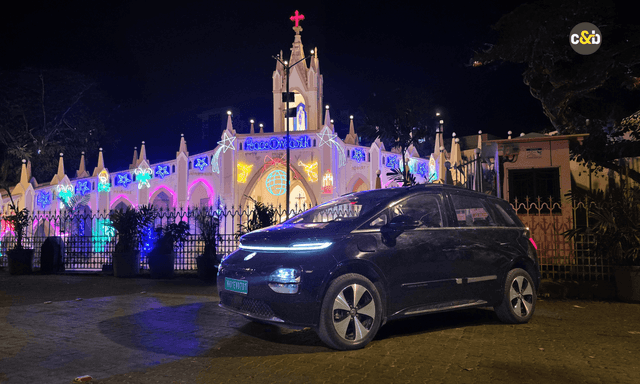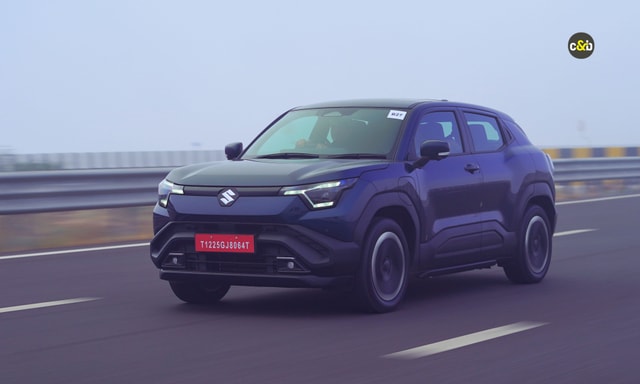Regenerative Braking: How Does It Work?

Robust braking systems are essential to a car's functioning. If the brake fails, it can lead to accidents that could lead to death. Electric vehicles are starting to become the norm in society. With many manufacturers looking to go fully electric, people need to understand the various components and challenges that they might face along the way. The braking systems are interesting to talk about.

What is regenerative braking?
Known as regen, this braking system in electric vehicles is revolutionary. It is a way of using the kinetic energy from the car and converting it into chemical energy that can be stored and used by the batteries later.

How does the regenerative braking system work?
When the driver's accelerator pedal is slowly depressed, electrical energy is converted into kinetic energy, which turns the wheels. Later, when the accelerator pedal is released, the kinetic energy gets converted into chemical energy stored inside the batteries. This is later used by the vehicle.
One thing to point out here is that this system is not 100% efficient. Only part of the energy originally used can be recovered, but it can still come in handy!

Single-Pedal driving
The electric vehicle's ability to bring itself to a halt through the regenerative braking system as the accelerator is released is called single-pedal driving.
This might sound very impractical on paper, especially in scenarios where there is high or continuously moving traffic. Thankfully, this concept is helped by pressure systems. Cars either have coasting mode (which allows the car to freewheel before coming to a stop) or gradual stoppage after the pressure is taken off the pedal.
Some companies (like Nissan) also include a hydraulic braking system that allows the car to stay stationary after it has stopped. After the pedal is pressed again, the brakes lift, and the car travels again.

Advantages and Disadvantages
There are a few key advantages of the regenerative braking system:
- This significantly improves the vehicle's fuel economy.
- Brakes based on friction can be implemented due to regenerative braking.
- The battery charge is extended to a great level.
The major disadvantages that accompany this system include:
- The car not being able to use this system in a stop-and-start system. When the car is stuck in traffic, the system is rendered useless.
- Until new technological advancements, different apparatus is required to ensure that regeneration happens.
- The maintenance cost to protect the machines and apparatus is high.

Developments in the field
Car manufacturers have been looking towards incorporating safety systems, sensors, and navigation data with regenerative braking. There have been talks of improving the cruise control mode to make driving easier.
Trending News
 3 mins readWill The Kawasaki W230 Be Launched In India?
3 mins readWill The Kawasaki W230 Be Launched In India?
Latest News
 car&bike Team | Dec 24, 2025Updated Bajaj Pulsar 150 Launched At Rs 1.09 Lakh: Gets LED Lighting, New ColoursThe Pulsar 150 is offered in three variants with prices topping out at Rs 1.15 lakh (ex-showroom).2 mins read
car&bike Team | Dec 24, 2025Updated Bajaj Pulsar 150 Launched At Rs 1.09 Lakh: Gets LED Lighting, New ColoursThe Pulsar 150 is offered in three variants with prices topping out at Rs 1.15 lakh (ex-showroom).2 mins read Janak Sorap | Dec 24, 20252026 Kawasaki Ninja 650 Launched at Rs 7.91 LakhWith E20 compliance, the 2026 Ninja 650 receive a new colour update and a premium price tag.1 min read
Janak Sorap | Dec 24, 20252026 Kawasaki Ninja 650 Launched at Rs 7.91 LakhWith E20 compliance, the 2026 Ninja 650 receive a new colour update and a premium price tag.1 min read Jafar Rizvi | Dec 24, 2025Listed: Car Manufacturers That Will Hike Prices From January 2026Based on the announcements made so far, the price increase across car models is expected to range between 2 and 3 per cent.3 mins read
Jafar Rizvi | Dec 24, 2025Listed: Car Manufacturers That Will Hike Prices From January 2026Based on the announcements made so far, the price increase across car models is expected to range between 2 and 3 per cent.3 mins read car&bike Team | Dec 24, 2025KTM RC 390 Discontinued Globally, Remains On Sale In IndiaThe KTM RC 390 will continue to be offered on sale in India, where it is manufactured and there’s still strong demand for the model.2 mins read
car&bike Team | Dec 24, 2025KTM RC 390 Discontinued Globally, Remains On Sale In IndiaThe KTM RC 390 will continue to be offered on sale in India, where it is manufactured and there’s still strong demand for the model.2 mins read car&bike Team | Dec 23, 2025India Bike Week 2025 In Pictures: Highlights From Edition 12The 12th Edition of IBW was held on December 19 and 20, and if you missed this year’s festival, here is a recap of all that happened.3 mins read
car&bike Team | Dec 23, 2025India Bike Week 2025 In Pictures: Highlights From Edition 12The 12th Edition of IBW was held on December 19 and 20, and if you missed this year’s festival, here is a recap of all that happened.3 mins read Amaan Ahmed | Dec 23, 2025Tata To Enter Rs 40 Lakh Passenger Car Market With First Avinya Electric SUV In End-2026Set to be one of three EV launches from Tata Motors next year, the first in the Avinya series of electric vehicles will catapult the Pune-based carmaker into uncharted market territory, as it will be the most expensive Tata yet.1 min read
Amaan Ahmed | Dec 23, 2025Tata To Enter Rs 40 Lakh Passenger Car Market With First Avinya Electric SUV In End-2026Set to be one of three EV launches from Tata Motors next year, the first in the Avinya series of electric vehicles will catapult the Pune-based carmaker into uncharted market territory, as it will be the most expensive Tata yet.1 min read
 Jafar Rizvi | Dec 24, 2025MG Windsor EV 38 kWh Long-Term Report: IntroductionThe Windsor EV has joined our garage, and before it settles into daily duty, I took it out to get a sense of what living with an electric car is like.4 mins read
Jafar Rizvi | Dec 24, 2025MG Windsor EV 38 kWh Long-Term Report: IntroductionThe Windsor EV has joined our garage, and before it settles into daily duty, I took it out to get a sense of what living with an electric car is like.4 mins read Seshan Vijayraghvan | Dec 23, 20252026 Kia Seltos Review: Formula Is Spot On, But Is The Timing Right?The 2nd-gen Kia Seltos has arrived, but it has the challenge of facing strong rivals like the Victoris and Sierra. The question is simple - Does it still have what it takes?9 mins read
Seshan Vijayraghvan | Dec 23, 20252026 Kia Seltos Review: Formula Is Spot On, But Is The Timing Right?The 2nd-gen Kia Seltos has arrived, but it has the challenge of facing strong rivals like the Victoris and Sierra. The question is simple - Does it still have what it takes?9 mins read Seshan Vijayraghvan | Dec 22, 20252026 Tata Harrier & Safari 1.5 Hyperion Review: By The Power Of Petrol!The new Tata Harrier and Safari petrol packs a new 1.5-litre TGDI Hyperion engine, but is it an ideal alternative to the diesel version?7 mins read
Seshan Vijayraghvan | Dec 22, 20252026 Tata Harrier & Safari 1.5 Hyperion Review: By The Power Of Petrol!The new Tata Harrier and Safari petrol packs a new 1.5-litre TGDI Hyperion engine, but is it an ideal alternative to the diesel version?7 mins read Bilal Firfiray | Dec 19, 2025Maruti Suzuki e-Vitara Review: Worth The Wait?After a long wait, the first-ever electric Maruti Suzuki is here. It’s the e-Vitara, and it comes with a few promises. But arriving this late, is it worth the wait? Or is it a case of too little, too late?9 mins read
Bilal Firfiray | Dec 19, 2025Maruti Suzuki e-Vitara Review: Worth The Wait?After a long wait, the first-ever electric Maruti Suzuki is here. It’s the e-Vitara, and it comes with a few promises. But arriving this late, is it worth the wait? Or is it a case of too little, too late?9 mins read Bilal Firfiray | Dec 18, 2025Mercedes-Benz G450d: The Subtle Power of EvolutionThe Mercedes-Benz G 450d evolves subtly with more power, improved efficiency, and modern tech, while staying true to the timeless G-Class design. And character.4 mins read
Bilal Firfiray | Dec 18, 2025Mercedes-Benz G450d: The Subtle Power of EvolutionThe Mercedes-Benz G 450d evolves subtly with more power, improved efficiency, and modern tech, while staying true to the timeless G-Class design. And character.4 mins read






























































































































